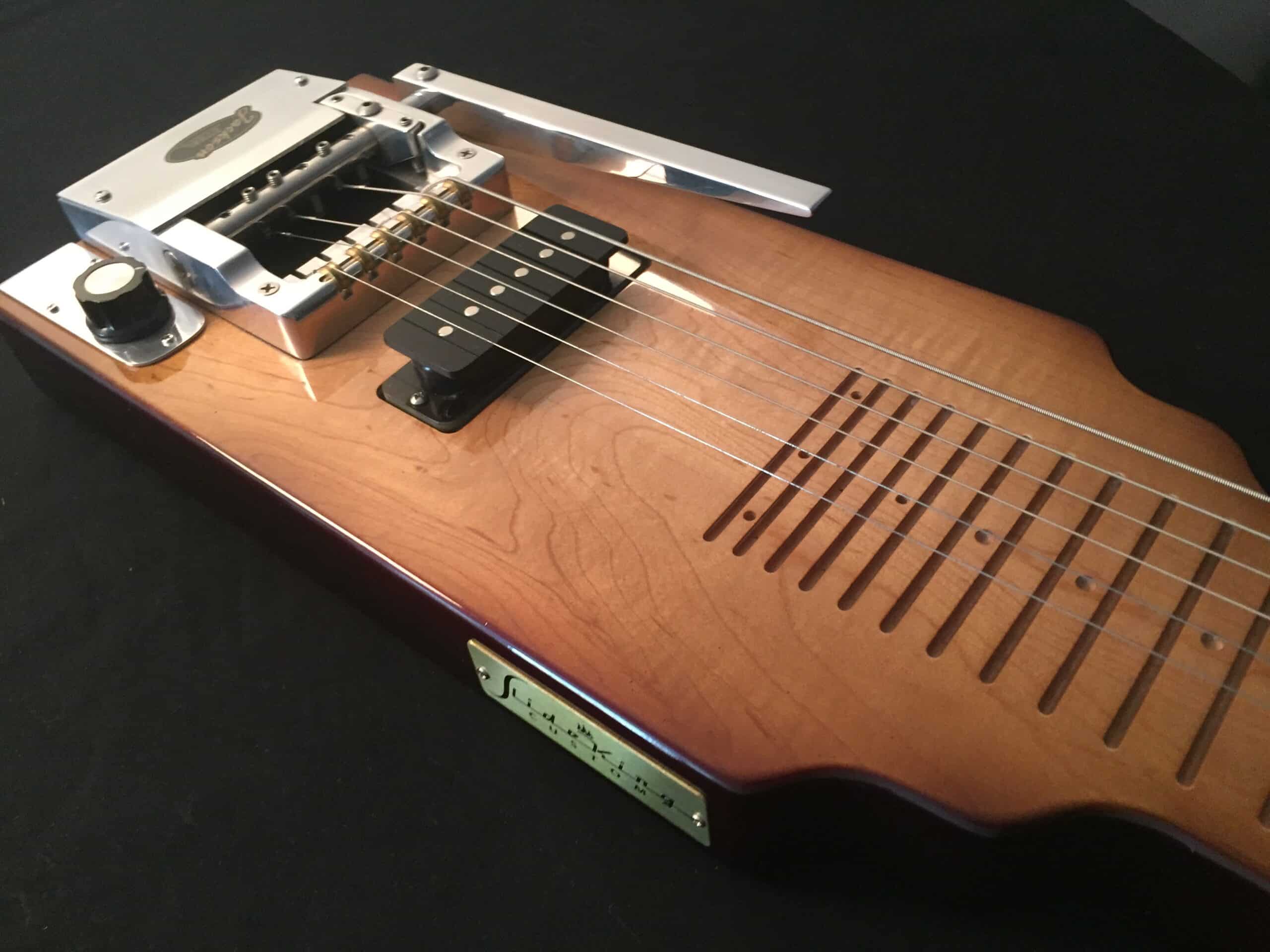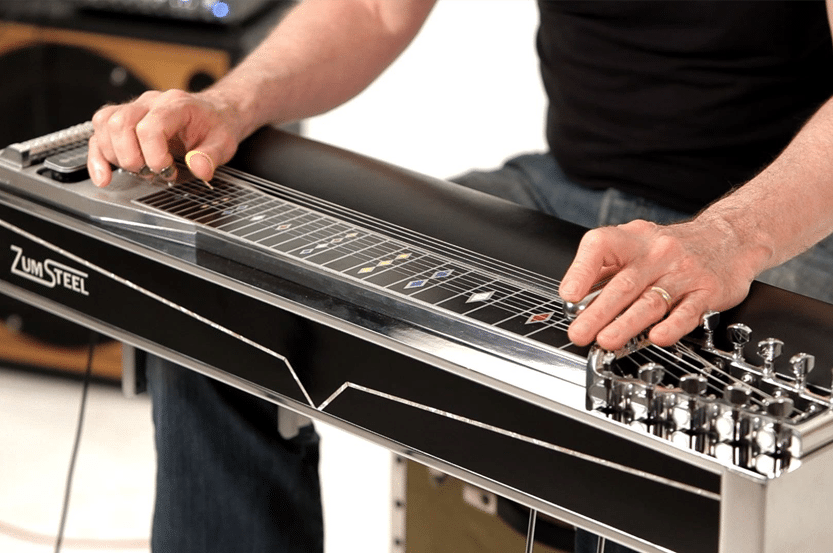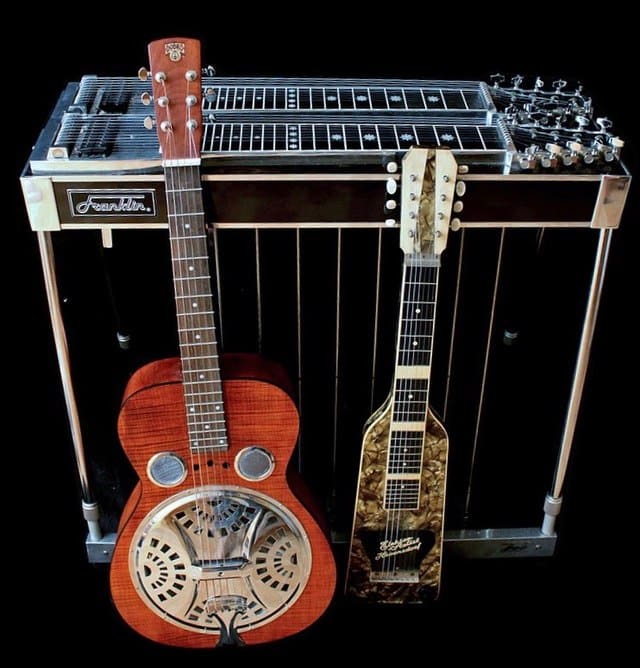Contents
While playing guitars, guitarists nowadays may choose between many techniques but if they make a poor choice, they won’t be able to nail the tone. Because of that, you should do some research before choosing the technique for your performance.
You don’t know much about techniques and have a hard time making up your mind once it comes to steel guitar vs. slide guitar? Then it’s strongly recommended that you spare a bit of your time to check out my article. Here, you can find all the information about the two techniques from their sound to their applications. Continue reading if you want to grasp the characteristics of steel guitar and slide guitar.
Quick Rundown On The Techniques

| Steel Guitar | Slide Guitar | |
| Orientation | The guitar is set up horizontally on a lap/stand. | The guitar is set up in the traditional position (against the body) |
| Slide | Metal or glass. | Metal, glass, ceramic, etc. |
| Sound | Smooth notes with twangy and resonant tones. | Expressive slides, bends, and glissandos with emotional feel. |
| Complexity | Requires precise coordination of both hands and good timing. | Easy for beginners |
| Application | Hawaiian and Western music. | Blues, rock, folk, Southern rock, folk and Americana. |
Steel Guitar Vs Slide Guitar: Insights

Technique
The steel guitar technique involves setting up the instrument horizontally and using a slide made of either steel or glass to glide along the strings. The technique delivers smooth and gliding tones but it requires two hands: One to hold the slide and one to pluck the strings. Meanwhile, the slide guitar technique resembles other techniques as the instrument is set up in the traditional position. Guitarists that use the slide guitar technique slide a cylindrical object along the strings to create expressive sound.
Complexity
Between the two techniques, steel guitar is harder to learn than slide guitar as the instrument is set up horizontally and people have to use both hands. Needless to say, to master the steel guitar technique, guitars must practice a lot. On the other hand, while slide guitar is also tricky to learn, the level of complexity is manageable for most of the time. The reason is that in slide guitar, you only need to worry about getting the tones right.
Unsurprisingly, novices who struggle to absorb advanced techniques in one stroke lean toward slide guitar in steel guitar vs. slide guitar.
Application
As mentioned above, the steel guitar technique is popular for its smooth gliding sound which means it works best for intricate solos and melodic lines. The twangy and resonant tone of steel guitar is well-suited for country and Hawaiian music. In the case of slide guitar, the technique brings a soulful feel to the sound owing to its expressive slides and bends. Consequently, it see extensive use by guitarists that play blues and rock.
Tuning
For your information, the steel guitar technique requires certain tunings for optimal tone. One of the common options is open tunings for slide playing as it complements various genres. About slide guitar, standard tunings will do and there is no need to change them. Of course, if you have specific preferences, you may make subtle changes.
How To Learn The Techniques: Advice

Steel Guitar
- Training: Familiarize yourself with the tuning of your guitar and what works for your styles as well as genres. Aside from that, you should practice regularly until the sound is to your liking.
- Master basic technique: Learn the basics of slide technique then work on the slide and strings until you get clean notes.
- Sustain and vibrato: Do your best to maintain notes for extended periods and throw in vibrato to up your skills.
- Think about chord shapes and scales. Look over shapes as well as scales common in your genre then learn the minor, major and dominant chords.
- Listen to experts: Search for those who appear good at using the steel guitar technique and study their playing styles. Pay attention to the phrasing, tone and so on.
Slide Guitar
- Experiment: Use slides of variable sizes and materials to find the one that fits your style.
- Work on the intonation: Intonation is crucial for slide guitarists so concentrate on slide placement for clear and in-tune notes.
- Develop control and dynamics. Practice controlling the pressure and angle of the slide against the strings to produce desired dynamics and nuances. That will make your guitar solos more expressive in the long run.

Hi music fan! I am Jeff. Hope that you enjoy some stuff I shared here in my personal blog.
About myself, Currently I am in charging as Artist Manager/Music Supervisor at 72 Music Management. I did managed album to Grammy Award in 2017 with 7 Nominations from 2014-2020 and had the opportunities to work with : A.J. Croce, Blind Boys of Alabama, Bobby Rush, Dom Flemons, Dustbowl Revival, Sarah Grace
Governor of the Memphis Chapter of The Recording Academy is one of a award that I am lucky to achieved.
